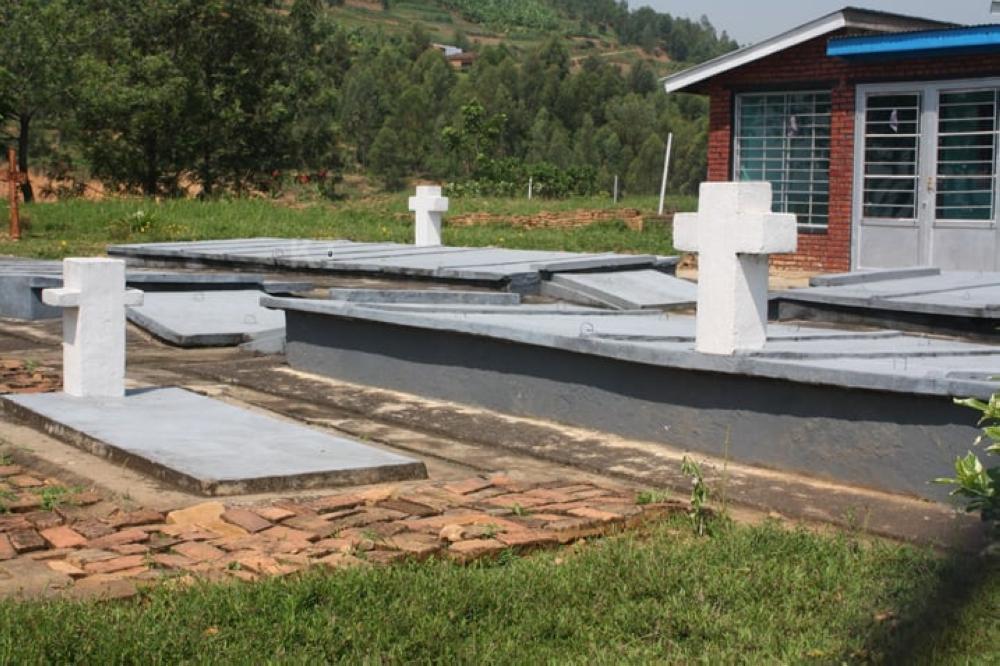Africa-Press – Rwanda. The government is intensifying efforts to consolidate district-managed memorial sites for the 1994 Genocide against the Tutsi, aligning with the 2019 Presidential Order.
Under the Presidential Order of May 2019, which determines the modalities for consolidating genocide memorial sites, Rwanda launched a nationwide process to merge these sites to enhance preservation, improve the visitor experience, and optimise resource allocation.
The decision to consolidate was made due to several factors.
Some memorial sites were built in high-risk areas vulnerable to natural hazards, which could result in their destruction or deterioration.
Other memorials house fewer than 1,000 bodies and are therefore considered for consolidation, except in cases where a site holds particular historical significance that would be difficult to preserve if merged.
Memorials located in remote or inaccessible areas—where rehabilitation is not feasible—are included in the consolidation process.
Sites that are close to one another and share significant historical similarities in terms of the planning and execution of the genocide are also being merged.
Memorials situated in noisy or uncomfortable environments are subject to the same process.
Alice Kayitesi, the Governor of the Southern Province, which includes eight districts, told The New Times that prior to consolidation, the province had 69 Genocide memorial sites and 75 graves.
Following consolidation, this number will be reduced to 53 memorial sites and eight graves.
“So far, seven Genocide memorial sites and 38 graves have been consolidated, accounting for 117,528 bodies,” she said.
She also announced that 13 graves containing 4,202 bodies and one memorial site with 4,208 bodies are scheduled to be relocated in 2025 as part of the ongoing consolidation efforts.
At least 13,000 bodies of victims of 1994 Genocide against the Tutsi will be relocated from memorial sites in poor condition across the Southern Province and moved to sites that meet national standards, Kayitesi added.
ALSO READ Murambi: Where the dead can be heard
A number of existing memorials were substandard and poorly maintained—some lacked roofing, while others had been damaged by rainwater.
“This is a process we have initiated and will continue. Relocation is carried out only after thorough discussions with the families of Genocide survivors whose relatives are buried at the affected memorials. The bodies are only moved once families understand and accept the importance of this decision,” she explained.
Nationwide consolidation
The consolidation process is ongoing across the entire country.
In the Northern Province, Rulindo District authorities have begun reducing their Genocide memorials from nine to six.
However, the district emphasised that consultations with the families of victims buried at the affected sites are a prerequisite to ensure a smooth process.
In Rulindo District, memorials slated for relocation will be moved to others, including the Rugogwe memorial in Ntarabana Sector, the Bushoki memorial in Bushoki Sector, and the Shyorongi memorial in Shyorongi Sector.
Across the Northern Province, 26 memorials are set to be consolidated into 17, meaning approximately nine will be merged.
In the Eastern Province, 36 memorials will be reduced to 25. For example, in Rwamagana District, the number of Genocide memorials will decrease from 11 to six through the merging process.
In the Western Province, 60 memorials will be consolidated, leaving 42—meaning 18 will be merged.
A study conducted revealed that in the City of Kigali, there are currently 21 Genocide memorials, but these will be reduced to 14 through consolidation.
In 2023, the Ministry of Local Government announced that district-managed memorials for 1994 Genocide against the Tutsi would be consolidated nationwide, reducing their number from 214 to 152.
Rwanda currently has 222 Genocide memorials in total.
However, some are managed at the national level rather than by districts.
These include the Kigali Genocide Memorial in Gisozi, along with memorials at Rebero, Ntarama, Nyamata, Nyarubuye, Murambi, Bisesero, and Nyange.
What next after consolidating some memorials?
Jean-Damascène Bizimana, the Minister of National Unity and Civic Engagement, said: “Even though some memorial sites will be relocated, the areas where they were originally located must have symbols to ensure that the history of the Genocide in those specific areas is not forgotten.
The government must retain a number of Genocide memorials that it can effectively manage and preserve in the long term. Each district was tasked with determining how many memorials it should have.
However, some districts lacked the means to manage these sites properly. Districts such as Huye, Nyamagabe, Nyaruguru, Nyanza, and Karongi, for example, had a large number of memorial sites. Today, every district is aware of memorial sites to retain after we discussed.”
Philbert Gakwenzire, President of Ibuka, the umbrella organisation for Genocide survivors, reiterated that although memorials need to be merged, all paths of the genocide tragedy must be marked with symbols in various locations.
“That is why, as the government seeks to consolidate genocide memorials, the documentation of Genocide victims’ journeys must be taken into account. This will enable the establishment of symbols and genocide maps at different sites, in addition to the main, consolidated memorials,” he said
As part of ongoing efforts to digitise national memorial sites, the Ministry of National Unity and Civic Engagement (MINUBUMWE) has made the Bisesero and Murambi memorials accessible through virtual tours.
This initiative is part of a broader plan to digitise all eight national memorials.
According to Paul Rukesha, Director General of Communication and Outreach at MINUBUMWE, the digitisation process involves curating various materials—including survivor testimonies, historical photographs, archival footage, and first-hand accounts—to preserve and showcase each site’s unique history.
“Visitors can now book appointments to visit any national Genocide memorial site via the IREMBO platform, free of charge, eliminating the need for in-person bookings,” he added.
For More News And Analysis About Rwanda Follow Africa-Press






